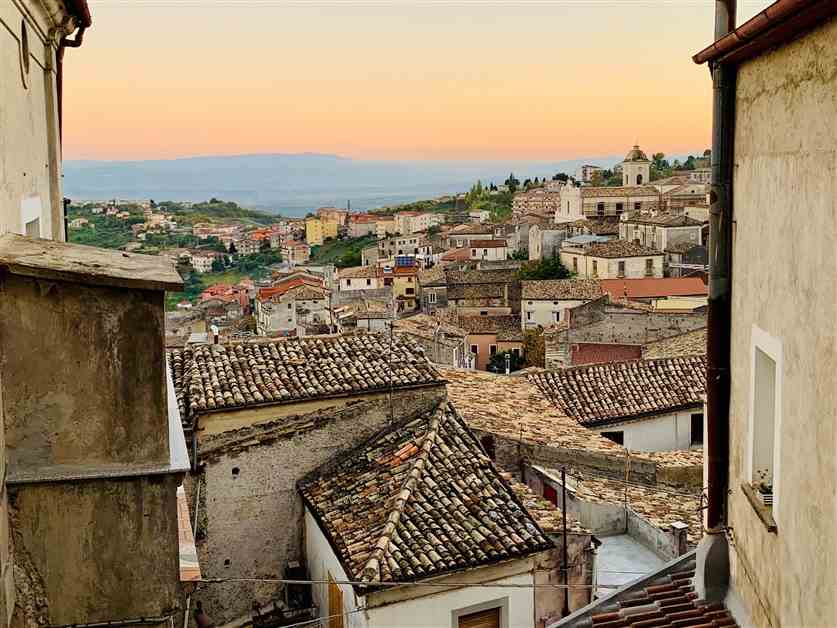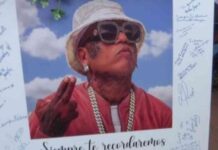Lungro: The 2,500-Inhabitant Town in Italy that Considers Itself the European Mate Capital
In a small village in Italy, a famous Argentine custom has taken hold: drinking mate. So much so that Lungro – the town in question – has been dubbed the European Mate Capital and even has a festival in honor of this infusion. The tradition has been established for over a century in this destination in the Calabria region.
Italian immigrants who came to Argentina in search of better opportunities would send yerba mate as a gift – like a curious souvenir – to their family and friends who stayed in Europe. Those who returned to Italy then spread the knowledge of how to prepare it. In the shops of Lungro, it is very easy to find yerba. They also have mate, which they call kungullo, and until a few years ago, some families made it with gourds. The straw is called pumbixhi, and the container in which water is heated is called çikullatera.
«These terms do not derive from Italian but from arbëreshë, a minority language that Lungro has maintained for over six centuries due to the arrival of Albanians around 1400,» explains Clemente Rennis, who manages the Instagram account @VisitLungro-Ungra.
In this town of just 2,500 inhabitants, drinking mate is also a ritual. It brings families and the gjitonie (neighborhood in arbëreshë language) together, and, like in Argentina, everyone drinks from the same straw. However, mate in Lungro has its own peculiarities. «The kungullo is prepared with sugar, a piece of hot charcoal, which is then removed, and an orange peel to enhance the flavor. Then the yerba mate and hot water are added,» says Rennis, who claims to drink mate every day.
Anna Stratigò is the leading advocate of mate in Lungro: she is the president of the Mate Academy, an organization that has been holding the Festa del Mate every first of August in this town for 10 years. An event with music, dance, and comedy shows where people can also find different mate-related products for sale.
«The mate is part of our identity. It has been established for over a century. We are born in homes where we drink mate around the fire, all together. I thought we had to let the world know that we were a small Argentina,» says Stratigò in communication with Clarín.
The festival, which will celebrate its tenth edition this year, always begins with the performance of La canzone del mate, composed by Stratigò and performed by children in arbëreshë. Most of the activities take place in the Mate Square, in front of the Stratigò Palace, a museum house that has belonged to Anna’s family for 15 generations and is very popular in Lungro. The Mate Academy, the Risorgimento Museum House, the Music Office, a Bed and Breakfast, and the Mate House, the only one in Europe, are all located there.
In this last one, there is an exhibition where a large number of mate gourds, straws, various types of yerba mate, paintings, the Argentine flag, and different photos are displayed, including one of Pope Francis drinking mate that Anna offered him during a visit to Calabria.
Lungro is not only known for mate but also for keeping alive the traditions of Albanian immigrants who founded this place in the second half of the 15th century. The arbëreshë language is spoken there, and different customs are maintained.
Anyone who comes here cannot leave without trying some of the Calabrian-Albanian gastronomic specialties: sweets made with honey and shtridhëlat me fasule, a pasta served with tomato sauce and beans, a typical dish of the area. In addition, Lungro is a religious capital and the seat of the Greek-Byzantine rite Eparchy.
Religious celebrations such as Easter (Pashkëvet) and the famous Carnival (Karnivalli) are very popular, during which the city streets come alive with traditional costumes, dances, songs, and parades. The Cathedral of San Nicola di Mira, of the Greek-Byzantine rite, is a must-visit. Its interior is a beauty: mosaics and frescoes decorate the walls and ceiling.
Another attraction is the Diocesan Museum where you can see religious silverware, paintings, and liturgical vestments from different periods. Moreover, this town is linked to mining activity, which contributed to the economy of the entire region until 1976 when the salt mines closed.
The miners of Lungro were protagonists of the unification of Italy (hence Lungro is the city of the Resurgence), leading the first labor struggles and the first mutual aid societies. The Historical Museum of the Salt Mines «G.B. Rennis» opened in 2012. It preserves objects, photographs, uniforms, and documents recovered from the mines, a testimony of one of the oldest and most important mines in Europe.
There is currently a project to recover the old mining area. But that’s not all. Lungro is also one of the gateways to the Pollino National Park, which covers 192,565 hectares and is characterized by its numerous mountain ranges. It is a perfect place for hiking and mountain biking.















